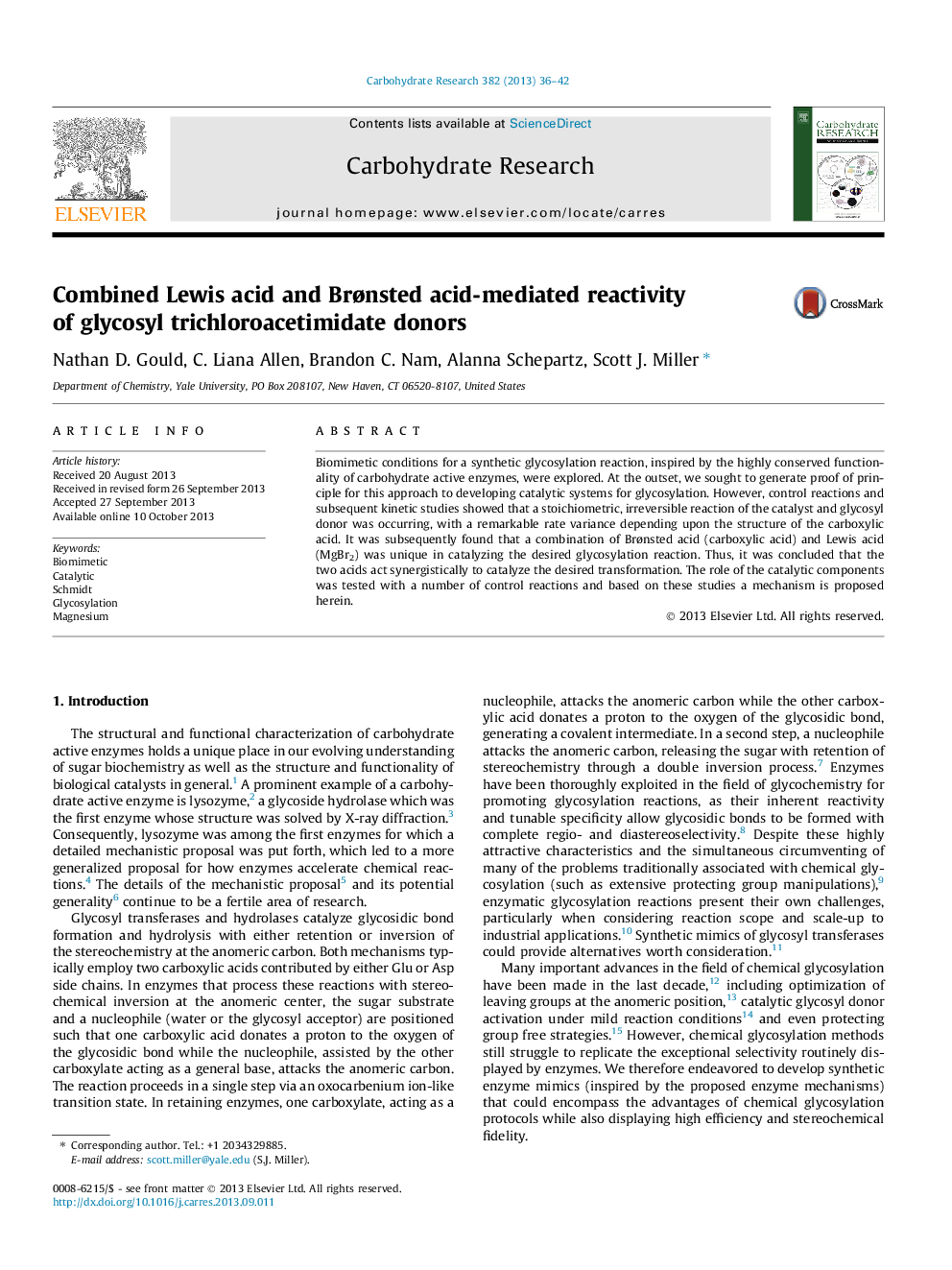| Article ID | Journal | Published Year | Pages | File Type |
|---|---|---|---|---|
| 1387996 | Carbohydrate Research | 2013 | 7 Pages |
•Carboxylic acids were proposed as biomimetic catalysts for glycosylation reactions.•‘Weaker’ acids reacted with the glycosyl donor to form the glycosyl ester.•Rate difference among five of these esterification reactions was ∼104.•Mg2+ ions were found to inhibit esterification and allow glycosylation.
Biomimetic conditions for a synthetic glycosylation reaction, inspired by the highly conserved functionality of carbohydrate active enzymes, were explored. At the outset, we sought to generate proof of principle for this approach to developing catalytic systems for glycosylation. However, control reactions and subsequent kinetic studies showed that a stoichiometric, irreversible reaction of the catalyst and glycosyl donor was occurring, with a remarkable rate variance depending upon the structure of the carboxylic acid. It was subsequently found that a combination of Brønsted acid (carboxylic acid) and Lewis acid (MgBr2) was unique in catalyzing the desired glycosylation reaction. Thus, it was concluded that the two acids act synergistically to catalyze the desired transformation. The role of the catalytic components was tested with a number of control reactions and based on these studies a mechanism is proposed herein.
Graphical abstractFigure optionsDownload full-size imageDownload as PowerPoint slide
